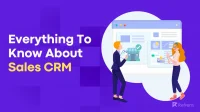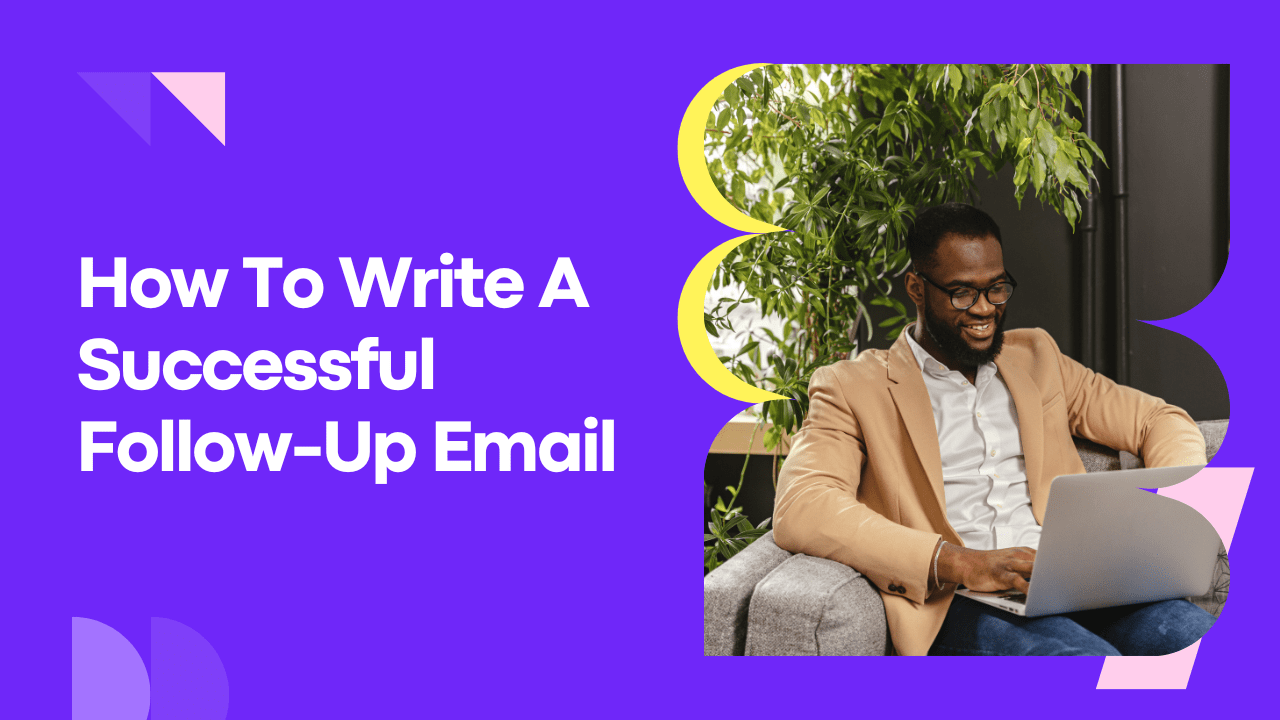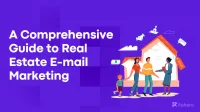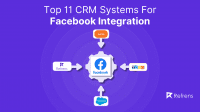With everything moving online in this digitalized world, the internet is an important source for businesses to reach out to potential customers. In order to sustain in this competitive environment, the need to attract more people is increasing rapidly. They have to go out there and make people aware of their existence.
For two reasons, cold emailing is more difficult than most forms of communication. You don’t yet have a relationship with your audience, and you don’t have any nonverbal input, so you can’t change your strategy in real-time.
Let’s look into how to write a perfect cold email.
What Do You Mean By Cold Emailing?
Cold emailing is a sales method that helps your company to gain new clients by sending them a hyper-personalized sales message. Many people believe that cold emailing is spammy or simply irrelevant (outdated as they say). Cold emailing is effective and has been demonstrated numerous times.
Cold emails can be difficult to compose because they demand a well-thought-out, goal-oriented strategy. If your cold emails aren’t getting results, as measured by a marketing report automation platform such as an agency analytics competitor, there’s something wrong with the manner you’re writing them. A well-planned cold email campaign generates a 30% response rate on average!
Learn how to sell like a pro with Sales 101 for freelancers.
Some best practices must be followed in order to achieve desired results while cold emailing. These techniques are specifically developed to provide results while also assisting you in achieving your objectives. This blog clearly discusses how to write the perfect cold email, as well as the best practices to keep in mind that will allow your company to flourish and fly to new heights.
Select The Suitable Prospects
Before you write a cold email, decide on your target to give that personalized touch. Only send cold emails to the people who are familiar with your field and surroundings and would benefit from your offerings. Know your ideal customer through locations, demographics, interests, and other such characteristics.
Build a list of leads after doing proper research. Keep your target narrow to establish a genuine connection. Sending cold emails to only relevant people also increases the chance of getting responses. Use a variety of tools (like learning how to use sales navigator for Gmail from LinkedIn) available only to find suitable leads.”
Add this new sentence after that: For sending out cold emails, bulk email software can be beneficial, as it allows you to send multiple emails at once.
Steps To Writing A Cold Email
Writing a cold email is a skill. Reusing an existing online cold emails template would not work the best for your business, you don’t want to show the consumers what they have seen already. Therefore, it is essential to craft a relevant email.
1. A Clear ‘From’ address
This is your way to let the viewer know who the sender of the email is. A vital part to focus on when cold emailing, is as it catches the prospect’s attention when they search for the source of the email. It also is your chance to build on your credibility. It could either be the company’s name or your name. Make sure you use a familiar sender’s name to provide authenticity.
2. An Eye-Catching ‘Subject’ Line
The subject line is the first thing that is going to catch the reader’s mind. On the basis of the catchy email subject line, the recipient is going to decide whether to open the email or not.
Your subject line should be concise, inviting, and genuine, take help of an AI email writer for guidance. It depends on various factors like who the audience is, what is your purpose, and what is the content of your email. When you are formulating the line, try and think from the consumer’s point of view, personalize it, and tie it to the content of the email. Ace the subject line to form an impression.
3. An Interesting ‘Introduction’
It’s difficult to start a cold email. You have the pressure of maintaining the recipient’s attention for a few seconds. Make your introduction short and crisp. Address the prospect and their work in 1-2 lines to catch their attention. Stick to the professional boundaries and make them feel that you have chosen to contact them personally. Make them believe that this is not a random email and that you care about them.
4. A Convincing ‘Body’ Structure
Ask a question or talk about a mutual connection. Establish common grounds to create a gripping flow. Talk about who you are and what your goal is. Be specific about your details so that they feel like continuing with reading the email. Pitch about your offerings.
Present the benefits by telling them how your product/service is going to solve their problem or add value to their workings. Do not make it sound like a sales pitch. The point here is to focus on solving the problem and not on the features of the offerings. Basically clearly and cleverly explain what the email is about and what is in it for them.
5. A Smart ‘Call-to-Action’
It is time to encourage your prospects to take action after reading your email. This is the part where you specify the actions that you want them to perform. It could be a call, a reply to an email, scheduling a meeting, or providing feedback. Select whatever suits you the best and be straightforward with what will provide the optimum result.
Make a smart move to leverage the opportunity. It should be simple for the prospect to do; you want to refrain from asking them to do too much in the first email itself. Our advice is to stick to only one call to action. Reiterate your aim to be clear. A call to action is your move to nurture that building relationship with the lead.
6. An Authentic ‘Signature’
End the cold email with an authentic-looking precisely drawn signature. It should tell them more about you and your company. This is your turn to gain focus on yourself. Provide factual details, relevant links, or information on where they can contact you or find you. It could be a contact number, links to social media profiles, or the company website. It helps to build credibility. Make it look trustworthy and keep it precise. If you’re wondering how to add your e-signature to give your email signature a professional feel, you may wish to look into how to create electronic signature using specialist software.
7. Be Ready With A ‘Follow up’ Email
It is not the time to get discouraged if you have not received any reply. Many a time one cold email is not enough to persuade the prospect to take any action or they might be too busy and completely forget about it. Have at least one follow-up email, but wait for a week before sending them.
The follow-up emails should not sound like a reminder to them. Add in some extra value to convince them. If you send more than one follow-up email, try to create a series of them and make a link to track. This can reflect your commitment and show that you are persistent. The same follow up email templates can be used for every prospect.
An Effective Cold Email Accomplishes 5 Goals
1. Make the message specific to the recipient
You must conduct your research. However, there is a good and incorrect method to accomplish it. It should be customized. Personalization implies that you’ve considered who this individual is, what interests them, and what they want – in other words, you’ve built a “frame of mind” about them. This demonstrates that you have taken the time to learn about them.
You also explain why you’re emailing them instead of someone else. People are significantly more motivated to help others when they believe they are uniquely suited to do so, according to research. You can tell a story that makes sense to them if you outline exactly where they fit in.
2. Recognize your own worth
We want to know who a stranger is and why they matter to us when we meet them or receive an email from them. As a freelancer, discover how to create your own personal brand and What personal branding elements should you consider before making one?
Keep it in mind when you’re a stranger. You’ve done a lot of research on the folks you’re emailing, but they have no idea who you are. You must demonstrate that you are credible and that people can trust you.
Knowing someone you have anything in common with is the most powerful sort of social proof you can provide. Mention any direct links you may have. You are no longer a stranger if you have a mutual friend.
If you don’t have that, mention it quickly if you have any authority, credibility, or social position that is relevant to this person and your request – a sentence or two should suffice. The more “important” you are, the better your chances of receiving a response are.
3. Ease your audience’s suffering or provide them with something they desire
Why should the recipient be interested in your message? Why should this harried individual take the time to respond? What is the benefit to them?
Remember that people will go to great lengths to avoid pain rather than obtain pleasure. If you’ve done your homework and discovered a major source of misery for the receiver that you can alleviate, be sure to mention it.
Give folks something they want if you can’t fix an issue. Offer to put them in touch with someone they’d like to meet – this sticks out because nearly no one provides without first asking. However, as a present from one stranger to another, your gift must feel suitable.
4. Keep it simple, straightforward, and actionable
For many people, the opportunity to help someone is extremely pleasurable – it may even qualify as a “desire.” You are providing them the opportunity to feel good about themselves by asking for assistance. However, make it simple for them.
One of the most effective strategies to keep things brief and direct is to write as if you were speaking. You wouldn’t just stroll up to this person at a cocktail party and start pitching them. You’d introduce yourself, say something pleasant, strike up a conversation with them about a mutual buddy or interest, and then make a reasonable request.
Before you submit your email, it’s recommended to read it aloud. It will read well if it sounds natural.
5. Be grateful and vulnerable at the same time
I’d even go so far as to say you should be obedient in some ways. You can offer them the impression that they are a nice person if they choose to help by demonstrating gratitude and vulnerability. Because you’re approaching them, you also offer them a thrill of authority and status.
Check out how you can save money on premium tools through cold emailing.
What’s Changed In The Way People Approach Cold Emailing?
Since its inception in sales, cold emailing has come a long way. Sending cold emails used to be solely for the aim of pitching an offer. In most cases, a single, generic message was sent to a big group of prospects with no personalization or segmentation.
Since then, the approach to sending cold emails has changed dramatically. Messages that make the case of a strong sale are now doomed to fail. Emails that are impersonal and one-size-fits-all are also no longer effective.
It’s all about creating a relationship with a prospect these days. The recipient, not your product or service, should be the center of cold email text.
Nowadays, winning a prospect’s interest requires a high level of personalization. As a result, email prospecting is critical to the success of your cold email strategy as a whole.
Furthermore, personalization involves building several versions of a follow-up and defining a trigger action that pings it, in order to address the exact response of your prospects. For this reason, numerous organizations employ email sequencing tools to streamline these efforts.
The more information you have about your prospects, the easier it will be to develop a message that is ideally targeted to each section.
What Should The Length Of A Cold Email Be?
The length of a cold email should be between 50 and 200 words. It’s preferable to be concise. Buyers are preoccupied and easily distracted. As a rule of thumb, the more personalized your email is, the longer it can be. When a lead is reading about themselves, a problem they despise, and a solution that appears tailor-made for them, they’ll read the entire thing, even if it’s only 350 words long.
Pro tip: Optimize your cold emails with the help of AI. An online cold email generator can assist you in crafting branded and personalized emails, allowing you to be more creative in the process.
When Is The Best Time And Day To Send A Cold Email?
As a general guideline, you want your cold email to be near the top of their inbox when they’re going through their inbox. Most business professionals perform this work first thing in the morning, so between 8 and 10 a.m. is the optimal time to send a cold email. And Monday through Thursday are the greatest days to send it since by Friday, many individuals have mentally checked out.
However, the optimal time and day to send a cold email are determined by your target demographic. Tracking your email analytics in your CRM is the only method to figure out what time and day receive the most conversions. After sending hundreds of cold emails, you or your firm will begin to notice patterns.
Conclusion
A tailored, relevant, and engaging cold email is an excellent way to start a sales conversation with a potential customer. To do so, perform some research on the lead, compose an introduction, give them a personalized pitch that addresses their likely pain issue, and ask them to take the next step. Now that you’ve learned the steps, use them to write your next cold email.
Cold emailing is an efficient technique to be used. If you ace the above-mentioned steps, no one can stop you from closing more quality leads. Strategize correctly and know the perfect timing to maximize the potential of the results.
Looking for work as a freelancer? Sign up now and build your profile !


















